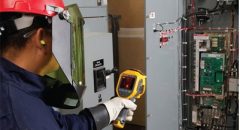FMEA—Failure Mode & Effects Analysis
A useful manual or a guide for FMEA that explains its goals, workflow, templates, advantages, and how to incorporate it into your business procedures.
Introduction to FMEA
What is FMEA?
FMEA, or Failure Mode & Effects Analysis, is a proactive approach to spotting potential failures in a product, process, or system before they happen. By identifying what can go wrong and how serious it would be, FMEA helps teams take preventive actions to reduce risk.
History and Origins of FMEA
FMEA was first used by the U.S. military in the 1940s and later adopted by aerospace and automotive industries to improve safety and reliability. Over the decades, it has become a standard tool for risk management in many sectors.
Why FMEA Matters for Organizations
Instead of reacting to problems after they occur, FMEA helps organizations anticipate issues, improve quality, reduce costs, and enhance safety—making it a valuable part of any process or product development plan.
Types & Applications of FMEA
Design FMEA (DFMEA)
DFMEA focuses on potential problems in product design. By analyzing parts, materials, or system interactions early, teams can prevent costly errors before production begins.
Process FMEA (PFMEA)
PFMEA looks at manufacturing or operational processes. It identifies where steps might fail, whether due to equipment, materials, or human error, and recommends preventive measures.
Other Variants: Service, Software, Equipment FMEA
FMEA isn’t just for products — it can be adapted to service processes, software systems, and equipment maintenance to predict failures and maintain high performance.
Industry-Specific Uses
Different industries use FMEA in specialized ways: automotive companies rely on DFMEA and PFMEA for safety-critical components, aerospace firms apply it to mission-critical systems, and medical device manufacturers integrate it into risk management processes.
Key Terminology & Principles
Failure Mode, Effect, and Cause
- Failure mode: How a product or process could fail.
- Effect: The impact of that failure on performance, safety, or user experience.
- Cause: The reason the failure might occur, such as design flaws or process errors.
Severity, Occurrence, and Detection (S, O, D)
- Severity: How serious the problem would be if it occurs.
- Occurrence: How likely it is to happen.
- Detection: How likely it is that the failure will be caught before causing harm.
Risk Priority Number (RPN)
RPN is a score calculated by multiplying Severity × Occurrence × Detection. It helps prioritize which failures need immediate attention. Some teams also use modern metrics that focus more on the severity of potential failures.
FMEA Process Workflow
Defining Scope and Assembling the Team
Decide which product, process, or system you’ll analyze, and gather a cross-functional team with diverse expertise to ensure no potential issues are missed.
Identifying Functions, Failure Modes, and Effects
List each function of your system or process, identify how it could fail, describe what would happen, determine the cause, and estimate S, O, and D ratings.
Prioritizing Risks and Evaluating Controls
Calculate RPNs, rank risks from highest to lowest, review existing controls, and plan corrective actions with clear responsibilities and deadlines.
Implementing Actions and Follow-Up Reviews
Take action to reduce risks, then reassess to confirm improvements. FMEA should be updated continuously as products or processes change.
Template Structure & Documentation
Standard FMEA Worksheet Layout
A standard worksheet usually includes item or process step, function, failure mode, effect, severity, cause, occurrence, controls, detection, risk priority, recommended actions, responsible person, and follow-up results.
Recommended Fields and Columns
Make sure your template captures failure mode, effect, cause, severity, occurrence, detection, risk ranking, recommended actions, action owner, and status.
Best Practices for Documentation and Version Control
Keep a clear record of changes, maintain version history, link FMEA to related process or product changes, and ensure the document is easy to access and update for all stakeholders.
Benefits, Limitations & Common Pitfalls
Key Benefits of Performing FMEA
- Detect risks early and prevent failures.
- Improve safety, quality, and reliability.
- Reduce costs associated with defects or recalls.
- Enhance compliance and documentation.
Recognized Limitations of FMEA
- Relies on expert judgment for S, O, D ratings.
- RPN may not always reflect real risk.
- Can become outdated if not regularly reviewed.
Common Mistakes to Avoid
- Treating FMEA as a formality rather than a meaningful exercise.
- Failing to update after changes in product or process.
- Assigning numbers without proper analysis or data.
- Overlooking the severity of potential failures.
Integrating FMEA into Quality & Risk Management Systems
Alignment with ISO Standards and Regulations
FMEA supports compliance with standards like ISO 9001 for quality and ISO 14971 for medical devices by providing a structured approach to risk assessment.
Linking FMEA to Corrective Actions, Audits, and Continuous Improvement
FMEA should feed into your corrective-action plans, audits, and improvement cycles to ensure risks are addressed and tracked effectively.
FMEA as Part of Reliability Engineering and Preventive Maintenance
FMEA can guide preventive maintenance and reliability efforts by highlighting the most critical components or processes to monitor.
Digital Tools, Automation & Future Trends
Software Solutions for FMEA Tracking and Reporting
Modern FMEA tools automate data entry, calculate risk scores, track actions, and integrate with quality or lifecycle management systems.
The Role of AI and Data Analytics
AI can analyze historical failure data, predict potential issues, suggest failure causes, and streamline the FMEA process, making it faster and more accurate.
Emerging Trends
Fuzzy logic FMEA handles uncertainty in ratings, while advanced analytics and graph-based tools can identify complex relationships between failures and causes.
Summary & Next Steps
Recap of Key Takeaways
FMEA helps organizations prevent failures, prioritize risks, improve quality, and comply with standards. Understanding the process, templates, and best practices is essential for effective implementation.
How to Get Started with Your First FMEA
Start small: pick a product or process, assemble a team, identify functions and failure modes, assign ratings, calculate risk priorities, take action, and document everything.
Continuous Review and Living Documents
Keep FMEA current by updating it whenever changes occur, closing action items, and integrating it into your continuous improvement system.
Call to Action:
For professional guidance on FMEA, risk assessment, and HSE management, contact Aura Safety Risk Consultant for reliable and sustainable consultancy solutions.
Contact Number: +91 99994 02106
https://aurasafety.com/contact-us
Get free a quote
Submit your Details
+91 99994 02106
What we offer
Our Services
Identify, evaluate, and control process hazards with expert risk assessments, ensuring safe, reliable, and compliant industrial operations.

Identify, evaluate, and control process hazards with expert risk assessments, ensuring safe, reliable, and compliant industrial operations.

Implement site safety plans, audits, and training to prevent accidents, ensuring safer construction environments and regulatory compliance.

Design, engineer, and audit fire protection systems ensuring reliable performance, asset safety, and adherence to national safety standards.

Empowering workforce with certified HSE, fire, and industrial safety training programs for skill development and regulatory competence.

Create immersive, interactive VR safety training modules for realistic learning experiences in hazard recognition and emergency preparedness.
How it works
Industry Consultation
Project Scoping & Industry Brief
Service Selection
Site Visit & Inspection
Audit & Analysis
Report Submission & Discussion
Frequently Ask Question
DFMEA targets product design failures, while PFMEA focuses on manufacturing or process failures.
Conduct FMEA early in design or process development to prevent issues before they occur.
RPN = Severity × Occurrence × Detection; it shows which risks require the most attention.
RPN may not always reflect true risk if high-severity failures have low occurrence or detection.
Update it whenever there are product or process changes, after failure events, or on a periodic review schedule.
Yes—it applies to services, software, equipment maintenance, healthcare, and more.
Software solutions, dashboards, and AI-powered analytics can streamline the process and documentation.
